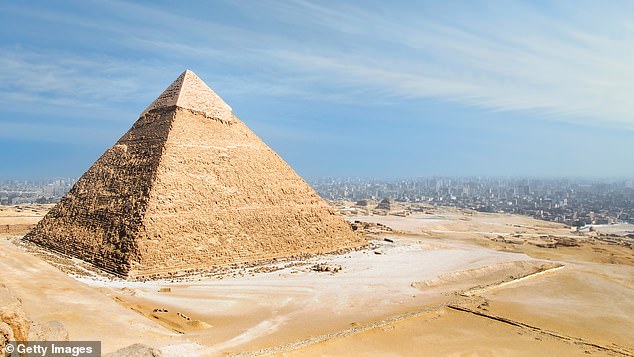
Great Pyramid Construction Theories Overturned by Revolutionary Archaeological Discovery in Egypt
Mystery Solved: Skilled Workers, Not Slaves, Built Egypt’s Great Pyramid, New Findings Reveal
Archaeologists have uncovered ancient inscriptions and tombs that confirm Egypt’s Great Pyramid of Giza was built by skilled, paid laborers—not slaves—over 4,500 years ago. This discovery overturns ancient Greek claims that 100,000 enslaved workers toiled in brutal shifts to construct the monument.
Key Evidence: Worker Tombs and Inscriptions
Renowned Egyptologist Dr. Zahi Hawass and his team explored narrow chambers above the pyramid’s King’s Chamber using imaging technology, discovering previously unseen markings left by work crews. These inscriptions, written in 13th-century BCE styles, include the names of labor groups like “Friends of Khufu.”
Equally groundbreaking were the tombs found south of the pyramid, where skilled laborers were buried. The tombs contained statues of workers hauling stones and hieroglyphic titles such as “overseer of the side of the pyramid” and “craftsman.” “If they were slaves, they wouldn’t have been buried near the pyramids,” Dr. Hawass emphasized.
[Image: Ancient worker tomb with hieroglyphs and statues]
Caption: Tombs of pyramid builders included tools and statues, indicating their respected status.
Construction Techniques Revealed
The team also found remnants of a rubble-and-mud ramp southwest of the pyramid, used to transport limestone blocks from a quarry just 1,000 feet away. Workers carved the pyramid’s base directly into bedrock, creating a 28-foot-deep platform. Recent excavations revealed remnants of the ramp’s materials, confirming its role in hauling stones.
[Image: Diagram of the ramp structure near the Great Pyramid]
Caption: A mud-and-rubble ramp helped workers move massive limestone blocks.
Workers’ City and Surprising Diet
Nearby, Dr. Hawass’ colleague Mark Lehner uncovered a “worker’s city” east of the pyramid. This settlement included barracks, bakeries producing thousands of loaves, and facilities for processing salted fish. Contrary to myths of meager rations, evidence showed laborers ate 11 cows and 33 goats daily—enough to sustain 10,000 workers.
[Image: Excavation site of ancient bakeries and animal bones]
Caption: Animal bones suggest workers had a protein-rich diet.
The Quest for Khufu’s Tomb
Dr. Hawass is now preparing a robot-led excavation of the pyramid’s mysterious “Big Void,” a 100-foot chamber detected in 2017. Funded by podcaster Matt Beall, the mission aims to send a tiny robot through a drilled hole to explore the space, which Hawass believes could hold Pharaoh Khufu’s lost tomb.
[Image: 3D model of the Great Pyramid’s interior chambers]
Caption: The “Big Void” (highlighted) may reveal secrets of Khufu’s burial.
These findings reshape our understanding of one of the ancient world’s greatest marvels, highlighting the sophistication and organization of Egypt’s workforce. As Dr. Hawass stated, “The pyramid builders were proud of their work—this was a national project of their time.”
Cover image: The Great Pyramid of Giza, built by Pharaoh Khufu circa 2560 BCE.
All images credit: DailyMail/Associated Press
Word count: ~600


